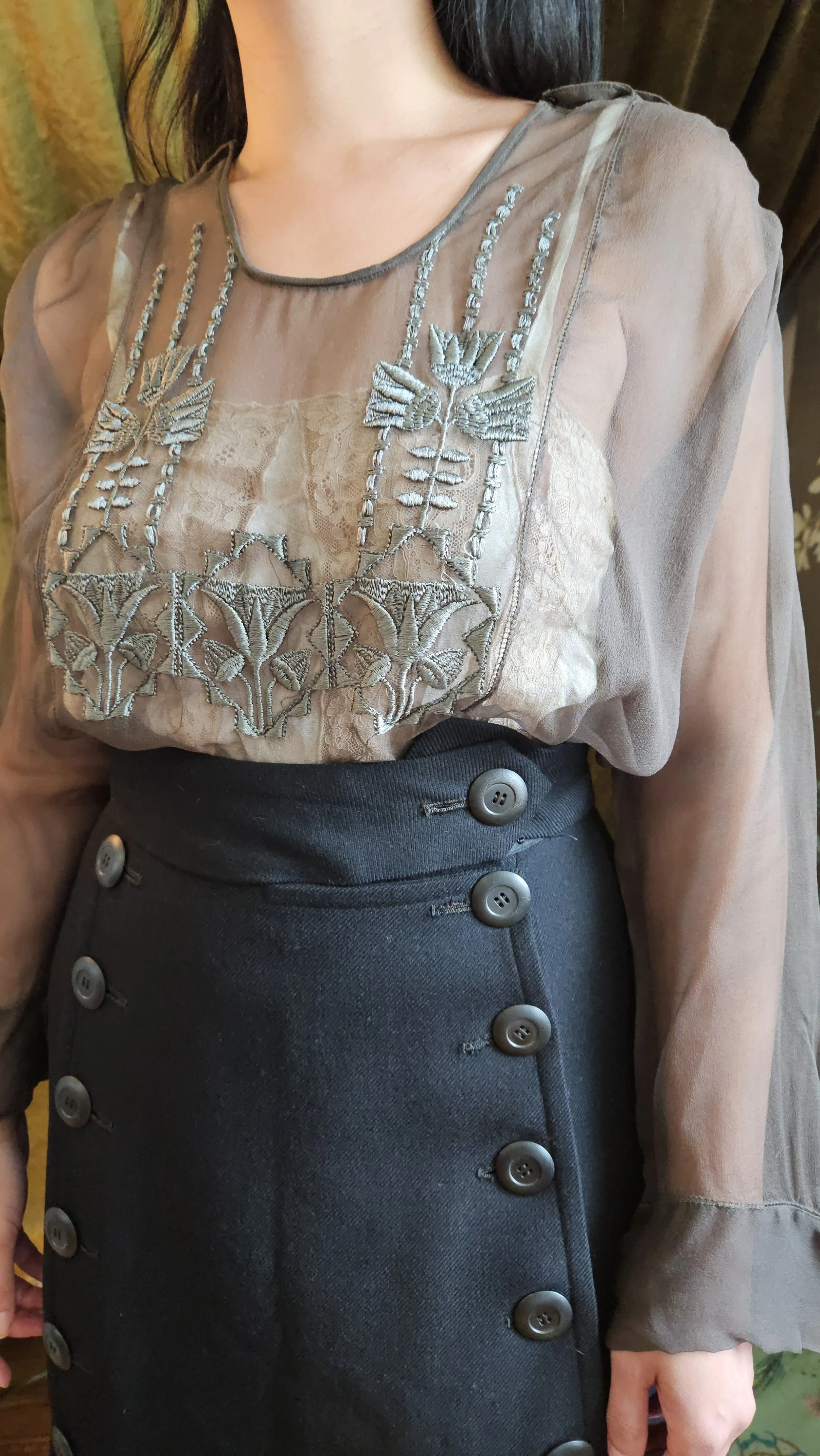 Image 1 of 15
Image 1 of 15

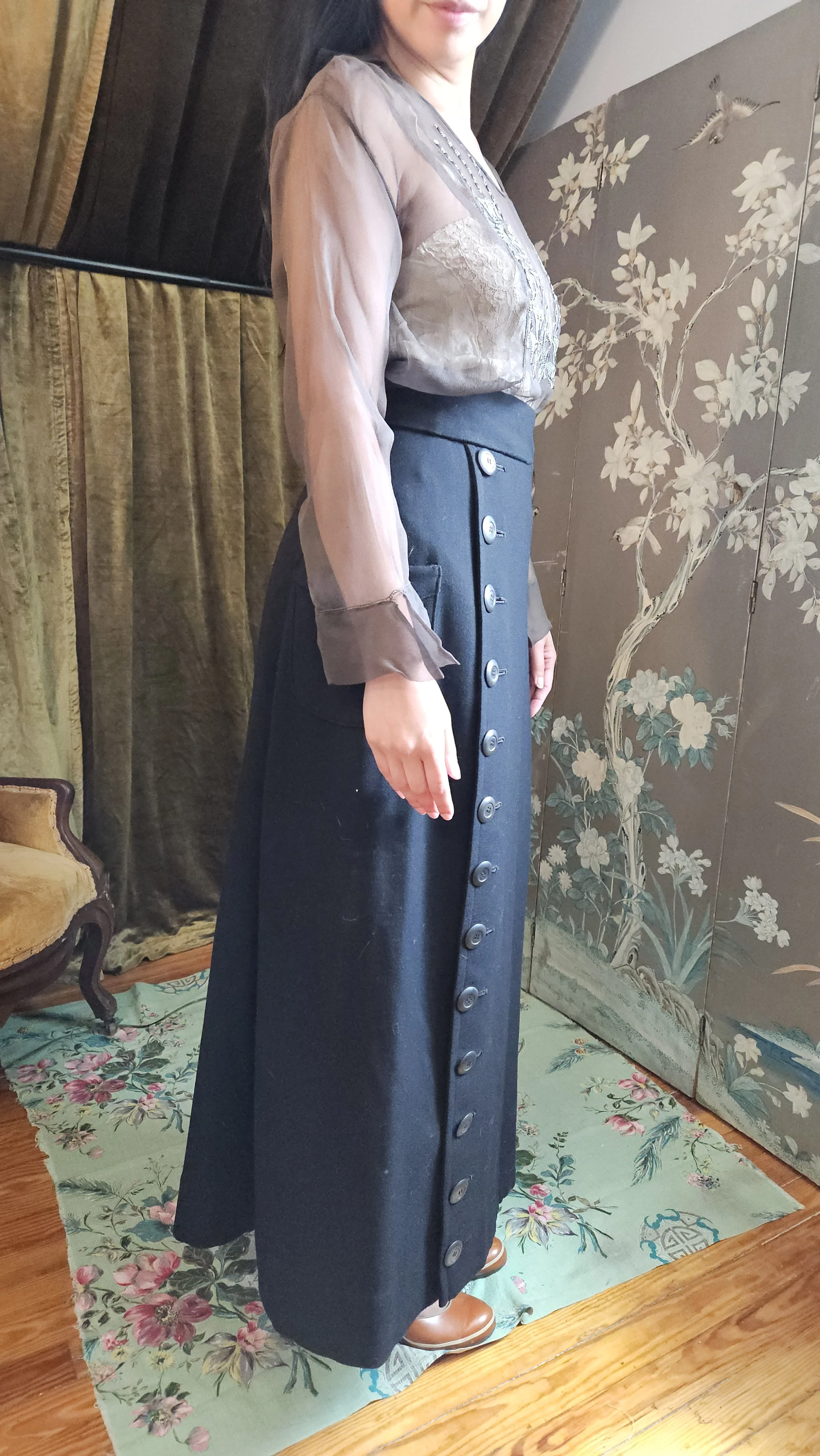 Image 2 of 15
Image 2 of 15

 Image 3 of 15
Image 3 of 15

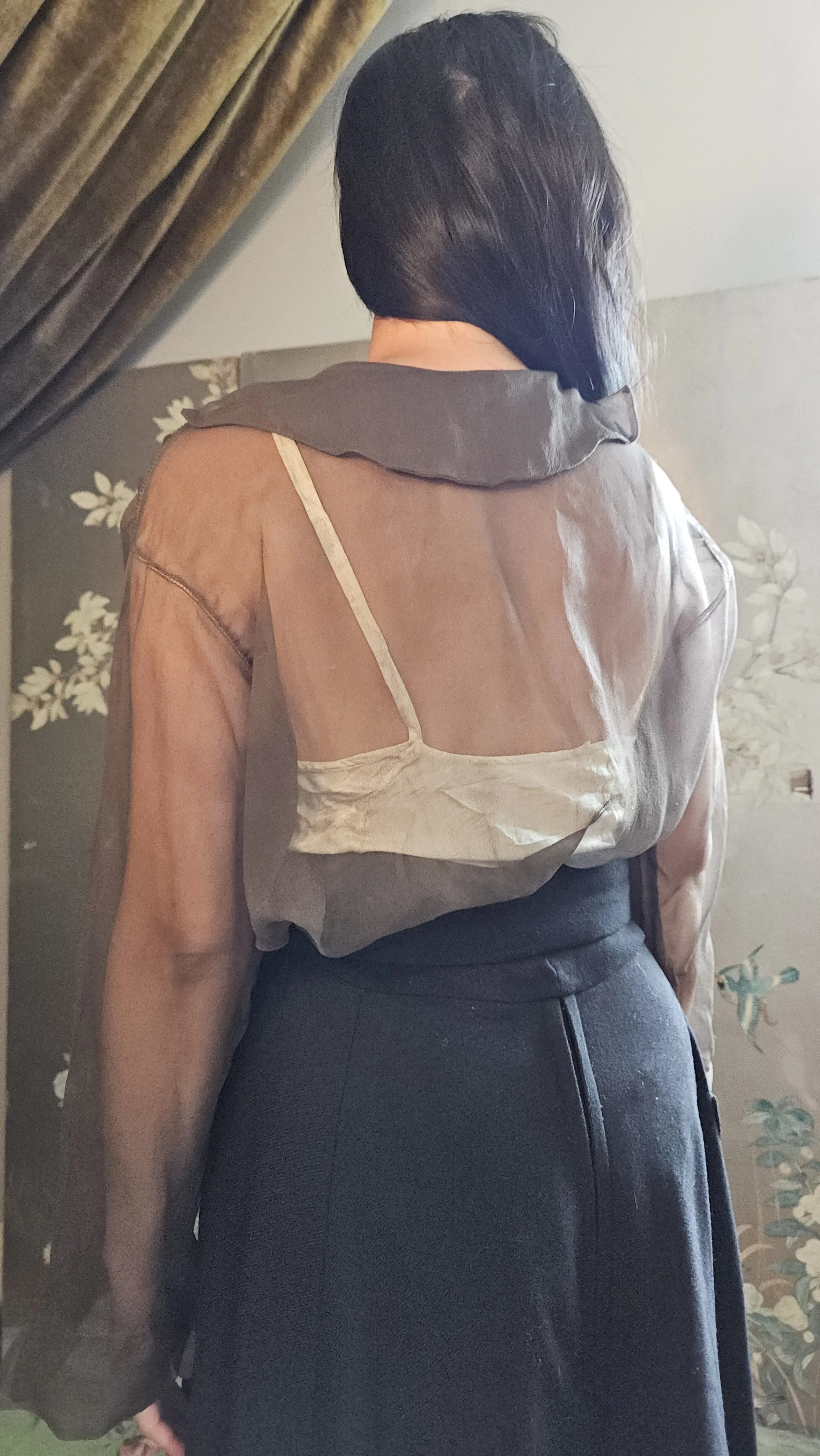 Image 4 of 15
Image 4 of 15

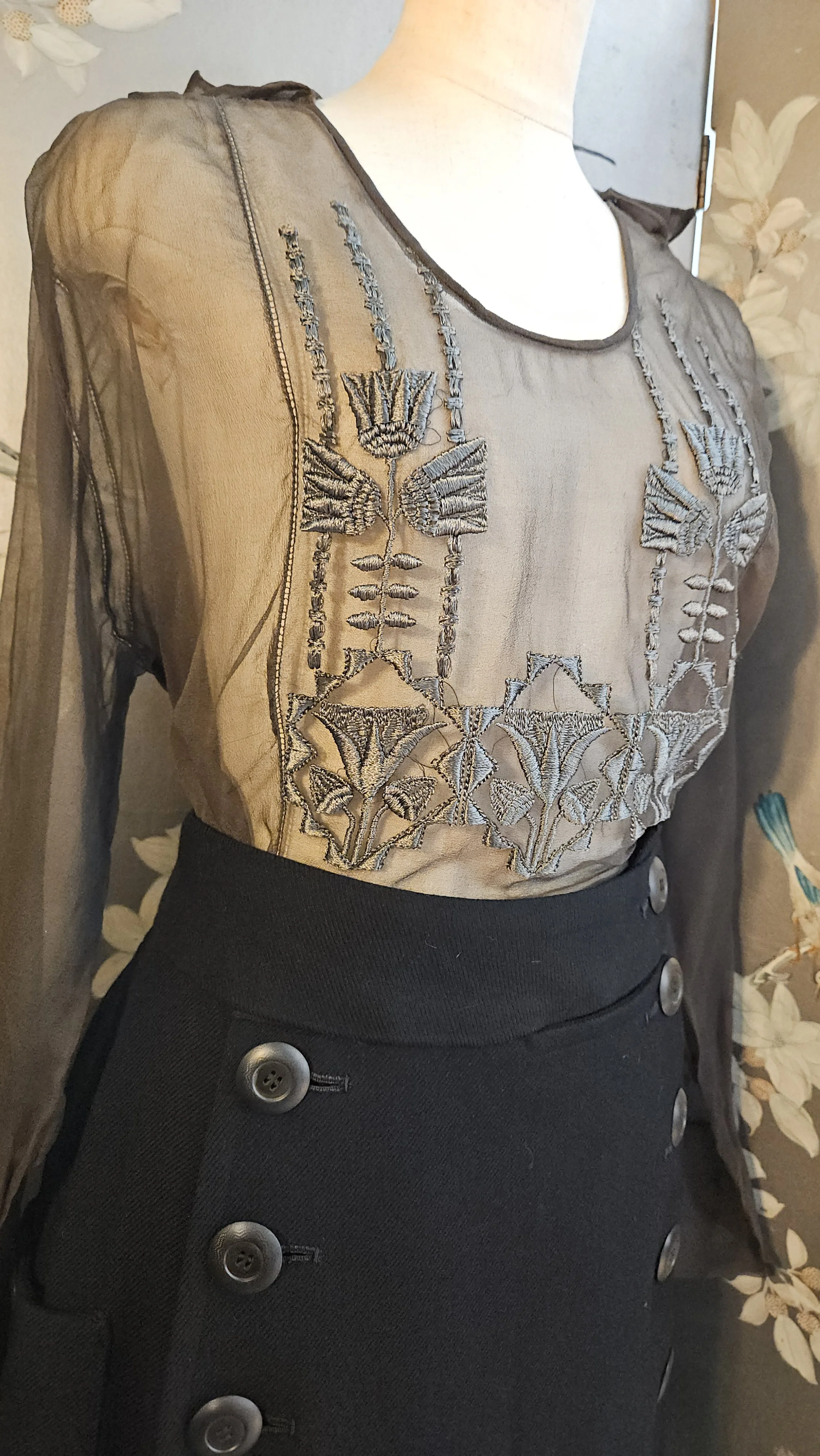 Image 5 of 15
Image 5 of 15

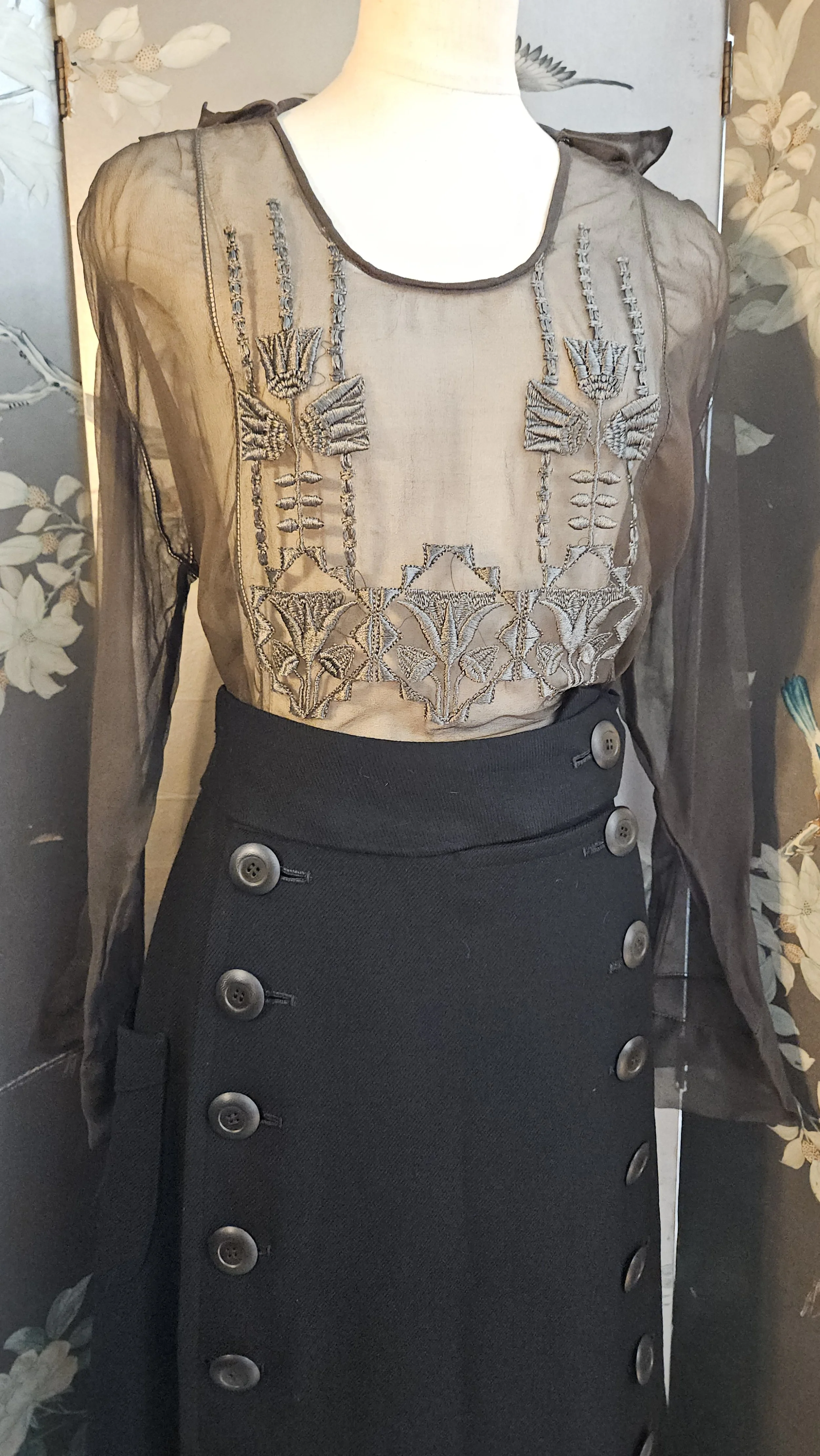 Image 6 of 15
Image 6 of 15

 Image 7 of 15
Image 7 of 15

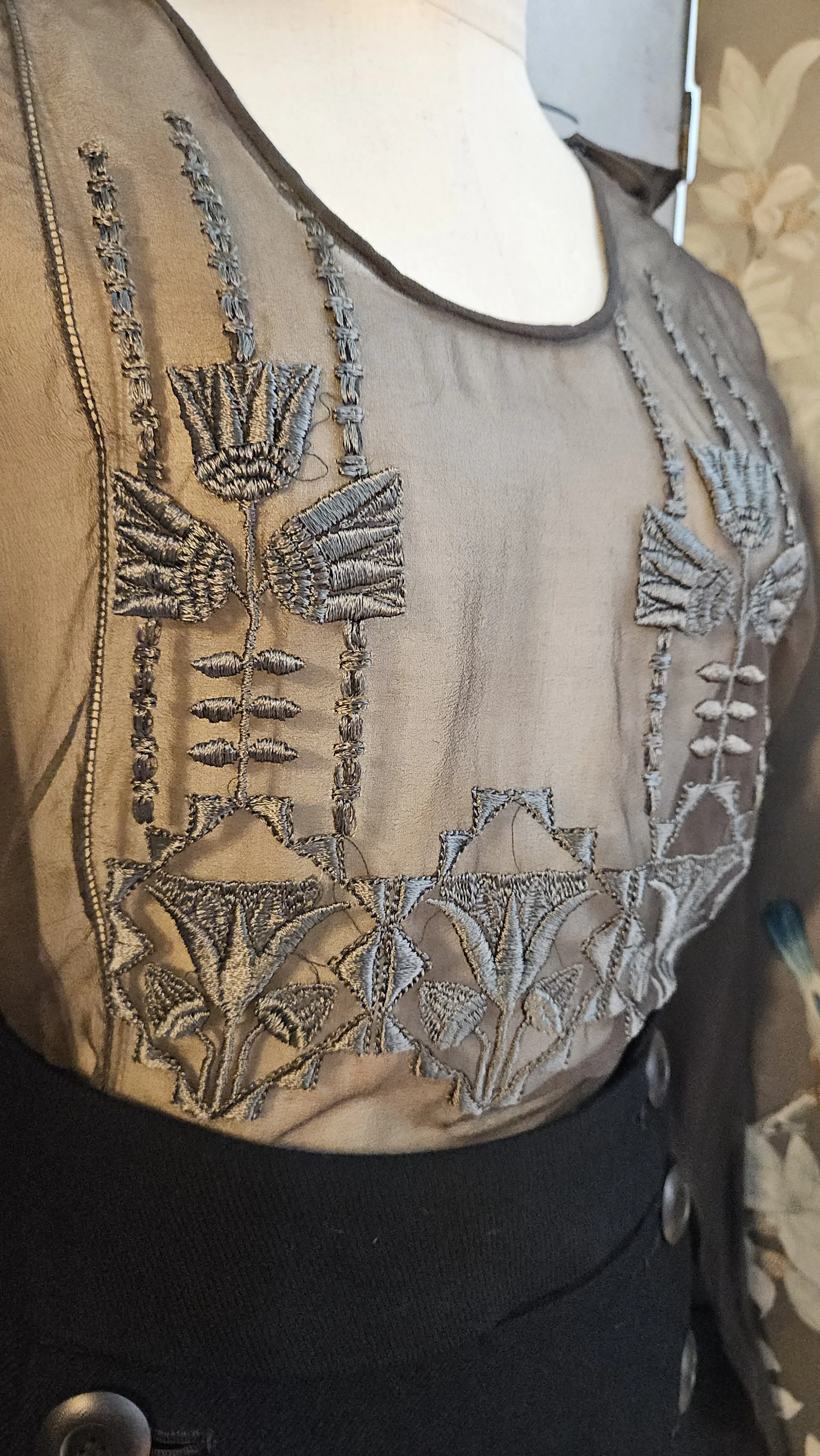 Image 8 of 15
Image 8 of 15

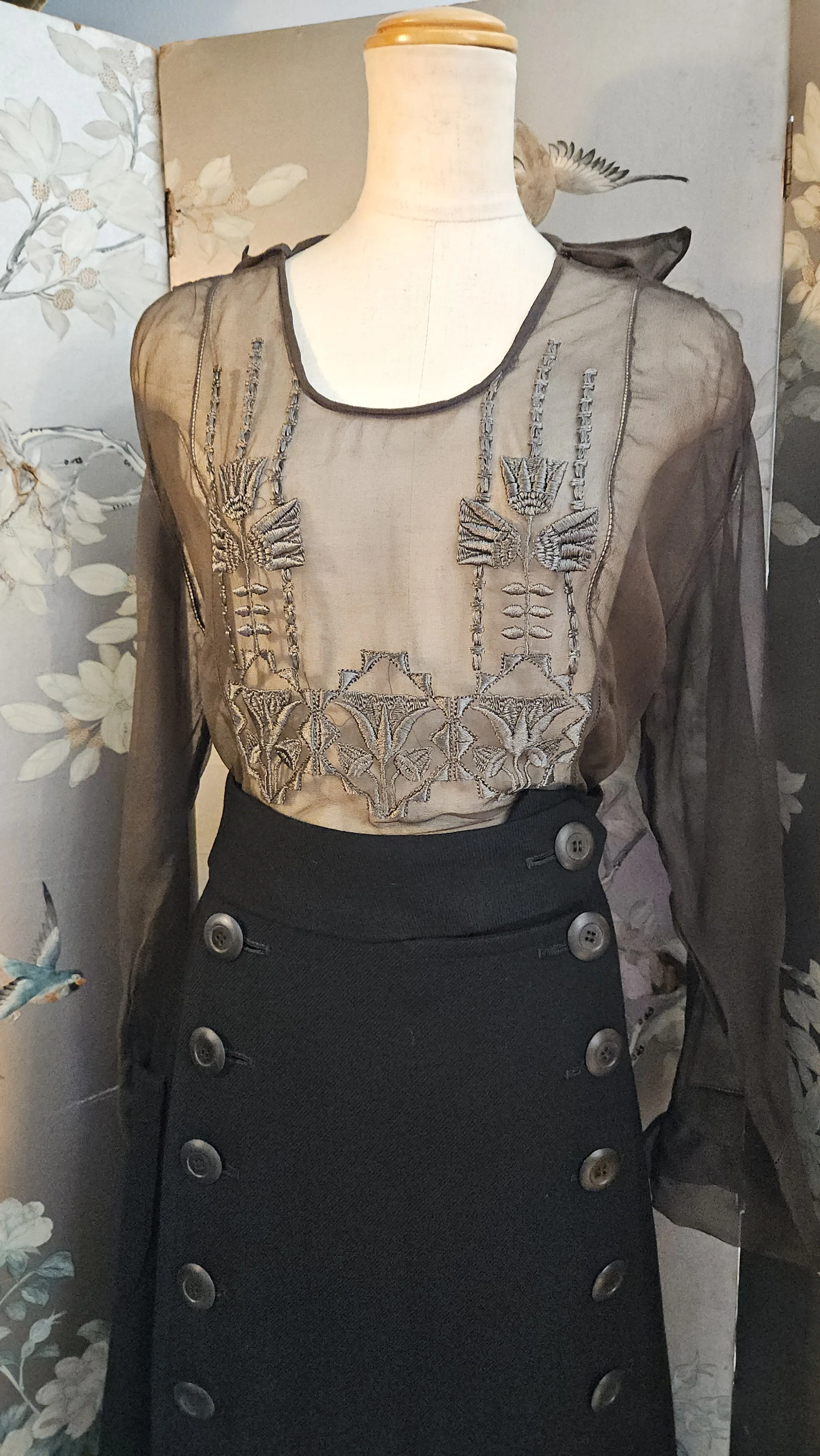 Image 9 of 15
Image 9 of 15

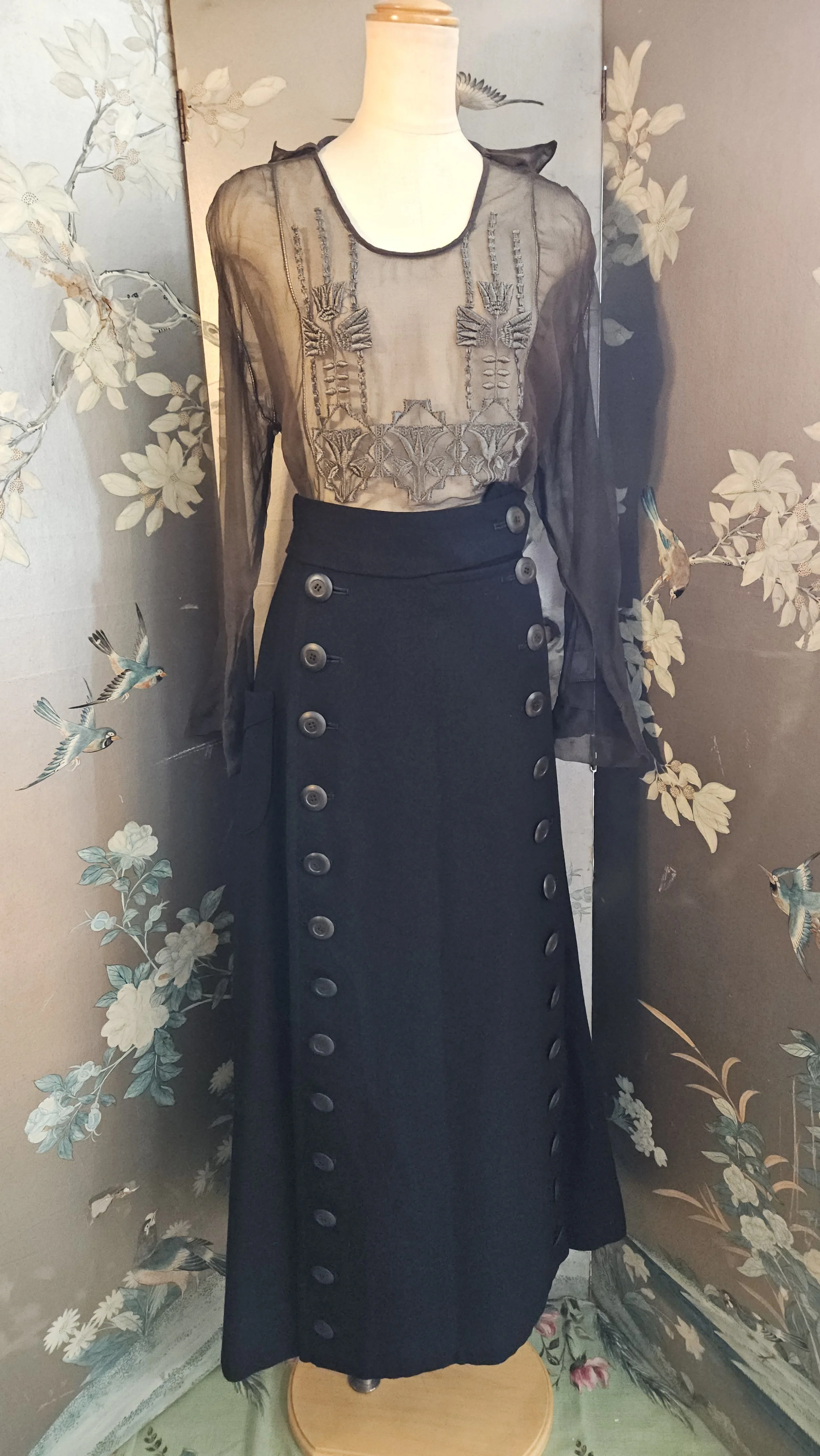 Image 10 of 15
Image 10 of 15

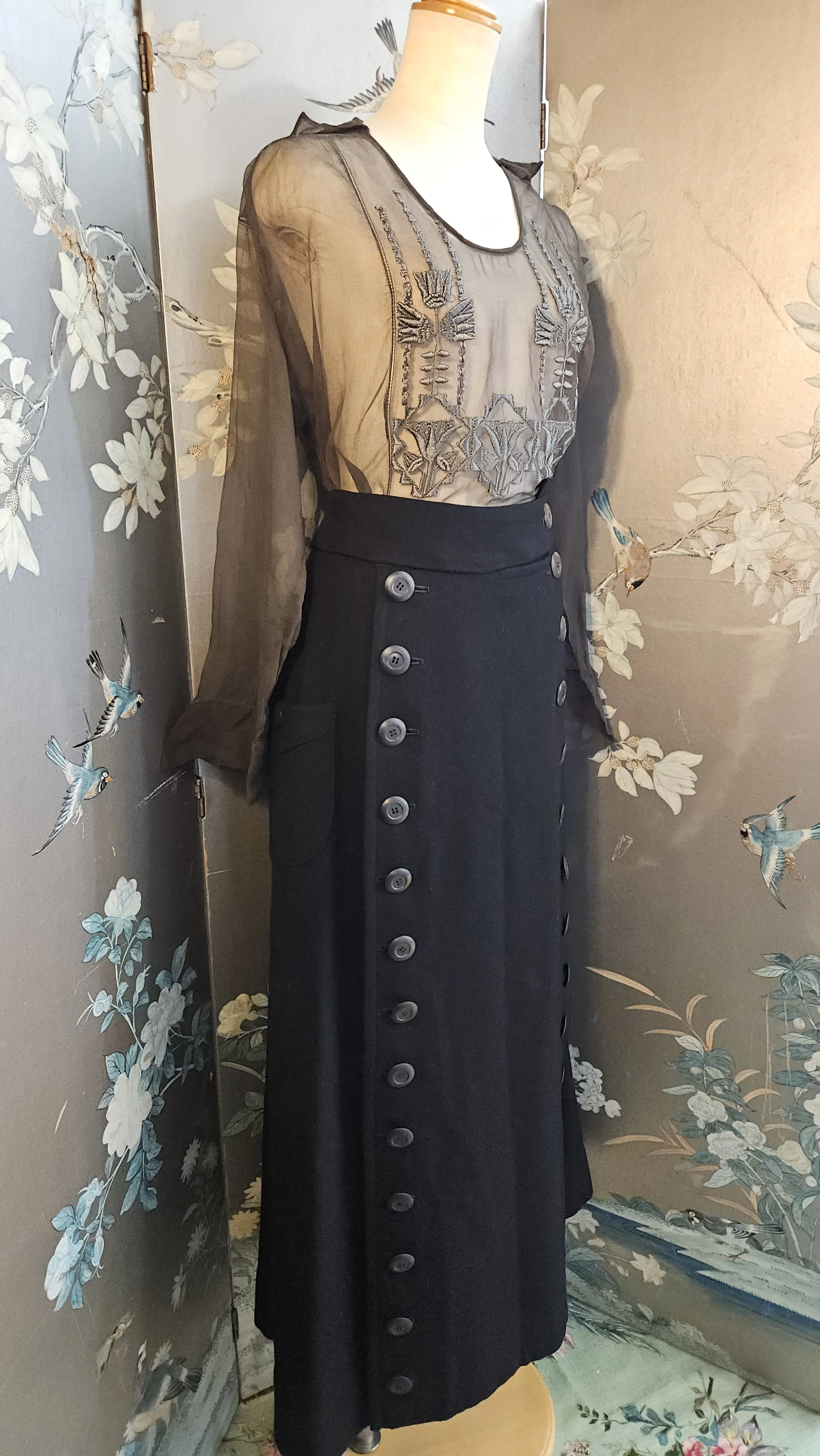 Image 11 of 15
Image 11 of 15

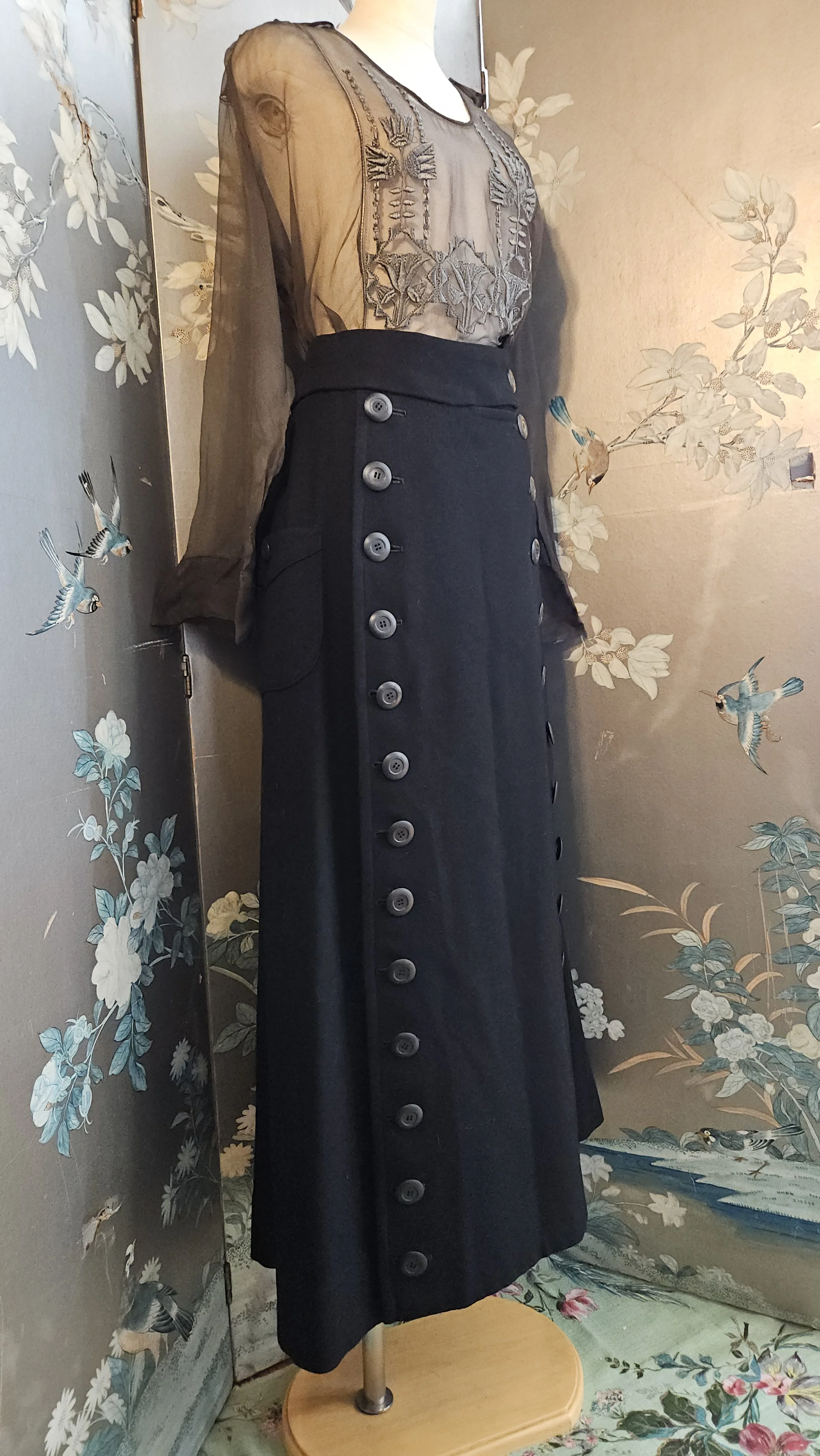 Image 12 of 15
Image 12 of 15

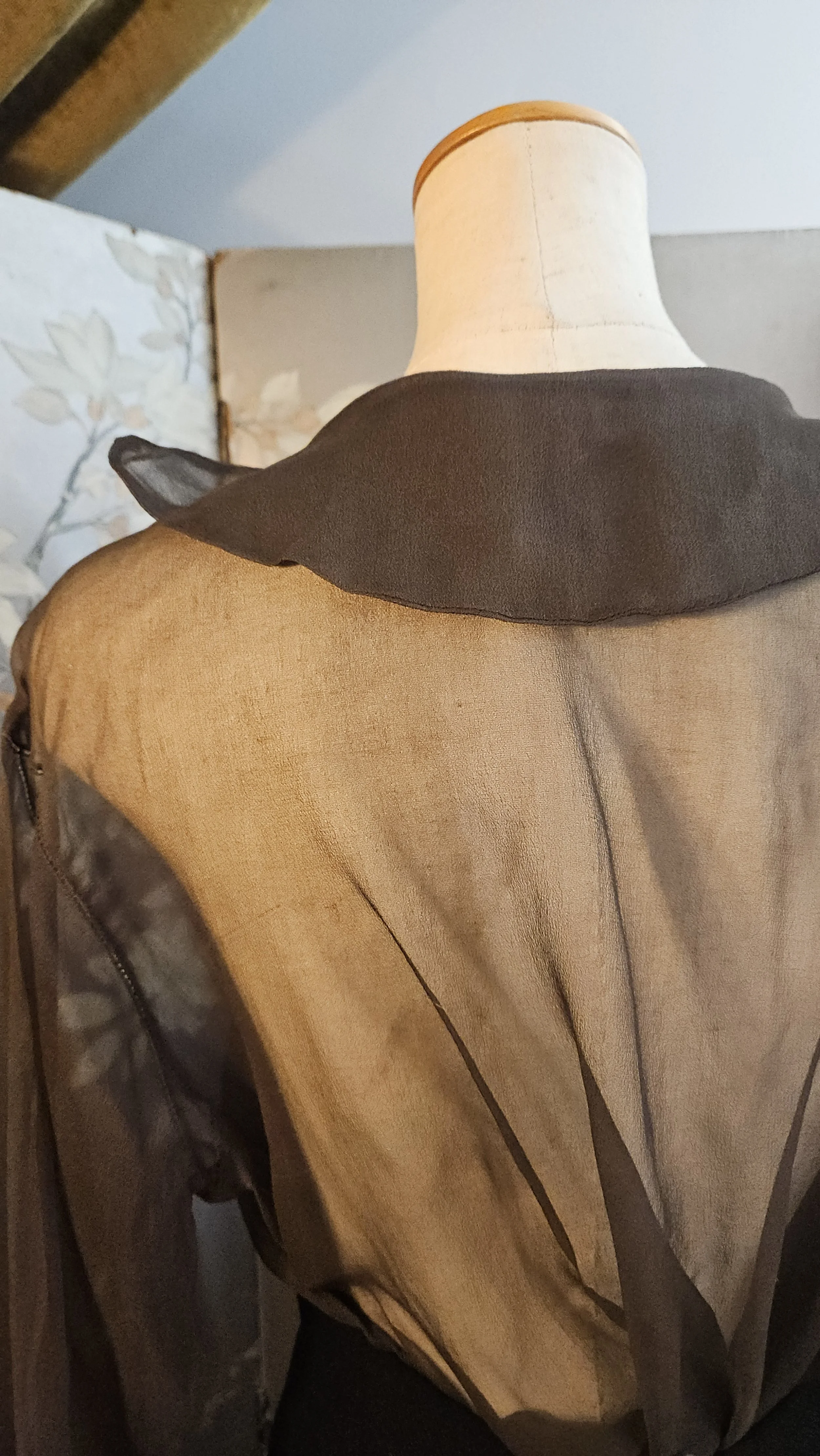 Image 13 of 15
Image 13 of 15

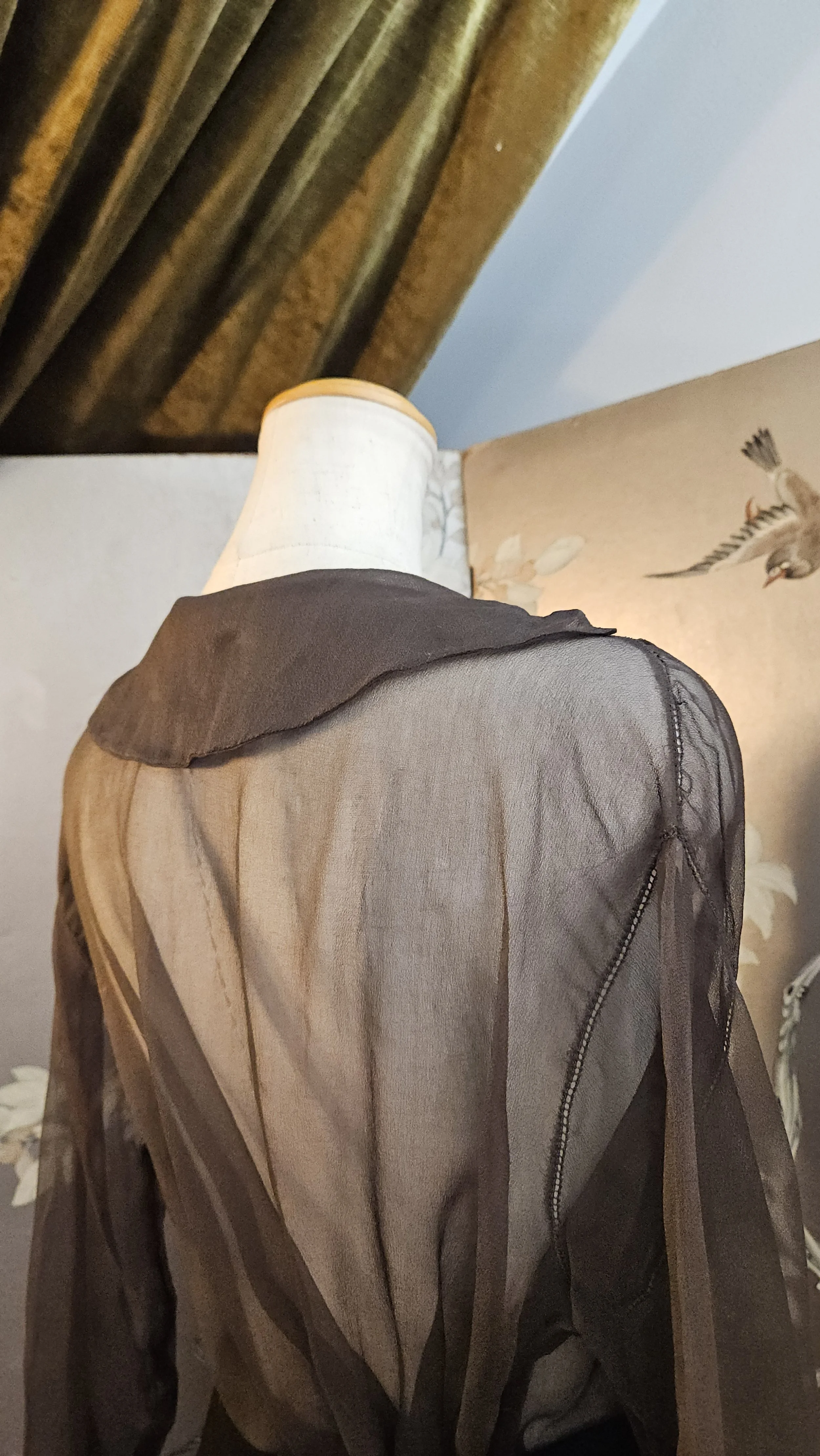 Image 14 of 15
Image 14 of 15

 Image 15 of 15
Image 15 of 15
















Antique Edwardian Egyptian Lotus Flower Sheer Silk Blouse (c. 1900s-20s)
This breathtaking sheer silk blouse from the 1910s–1920s exudes the mystique and romance of the Jazz Age, embodying the elegance of Edwardian silhouettes with the exotic influence of Egyptomania that swept fashion in the 1920s. Crafted from whisper-thin silk chiffon and delicately hand-embroidered with stylized lotus flowers, the motif draws clear inspiration from Ancient Egyptian iconography—an homage to the era's "Tut-mania" sparked by the 1922 discovery of King Tutankhamun’s tomb. Perfectly suited for collectors or connoisseurs of wearable history, this blouse balances fragility with striking visual presence. Whether styled with a high-waisted skirt or layered under modern tailoring, this piece tells a story of cultural fascination and feminine allure.
Features:
Authentic 1910s–1920s antique piece
Fine silk chiffon in a rare khaki color with sheer long sleeves
Hand-embroidered Egyptian lotus motif on the bodice
Original inner lace panel
Softly draped sailor-style collar at the back
Elegant fit with subtle volume in the sleeve and shoulder
A rare and evocative example of early 20th-century Egyptomania in fashion
Garment Measurements:
Bust: 46 inches
Hemline: 37 inches
Sleeve length: 20.5 inches
Length (shoulder to hem): 18 inches
Notes:
One snap closure at the neck, one snap and hook and eye at one waistline
Includes an antique sizing tag at the back of the neck marked “44”.
Egyptomania Fashion: A Brief History
Following the 1922 discovery of King Tutankhamun’s tomb, the world was swept up in Egyptomania—a fascination with ancient Egypt that dramatically influenced 1920s style. Designers embraced Egyptian Revival motifs such as lotus flowers, scarabs, pyramids, and sun discs, integrating them into embroidery, prints, and accessories. Flapper silhouettes mirrored the straight lines of ancient tunics, while metallic fabrics and bold, geometric details evoked the opulence of pharaonic treasures. Eye makeup and jewelry also reflected Egyptian aesthetics, with kohl-lined eyes and beaded headpieces becoming fashionable statements. Today these garments represent a time of cultural discovery and this garment should be worn in historical and cultural appreciation of this.
This breathtaking sheer silk blouse from the 1910s–1920s exudes the mystique and romance of the Jazz Age, embodying the elegance of Edwardian silhouettes with the exotic influence of Egyptomania that swept fashion in the 1920s. Crafted from whisper-thin silk chiffon and delicately hand-embroidered with stylized lotus flowers, the motif draws clear inspiration from Ancient Egyptian iconography—an homage to the era's "Tut-mania" sparked by the 1922 discovery of King Tutankhamun’s tomb. Perfectly suited for collectors or connoisseurs of wearable history, this blouse balances fragility with striking visual presence. Whether styled with a high-waisted skirt or layered under modern tailoring, this piece tells a story of cultural fascination and feminine allure.
Features:
Authentic 1910s–1920s antique piece
Fine silk chiffon in a rare khaki color with sheer long sleeves
Hand-embroidered Egyptian lotus motif on the bodice
Original inner lace panel
Softly draped sailor-style collar at the back
Elegant fit with subtle volume in the sleeve and shoulder
A rare and evocative example of early 20th-century Egyptomania in fashion
Garment Measurements:
Bust: 46 inches
Hemline: 37 inches
Sleeve length: 20.5 inches
Length (shoulder to hem): 18 inches
Notes:
One snap closure at the neck, one snap and hook and eye at one waistline
Includes an antique sizing tag at the back of the neck marked “44”.
Egyptomania Fashion: A Brief History
Following the 1922 discovery of King Tutankhamun’s tomb, the world was swept up in Egyptomania—a fascination with ancient Egypt that dramatically influenced 1920s style. Designers embraced Egyptian Revival motifs such as lotus flowers, scarabs, pyramids, and sun discs, integrating them into embroidery, prints, and accessories. Flapper silhouettes mirrored the straight lines of ancient tunics, while metallic fabrics and bold, geometric details evoked the opulence of pharaonic treasures. Eye makeup and jewelry also reflected Egyptian aesthetics, with kohl-lined eyes and beaded headpieces becoming fashionable statements. Today these garments represent a time of cultural discovery and this garment should be worn in historical and cultural appreciation of this.